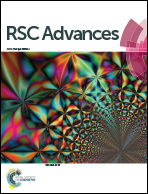Quaternised chitosan coating on titanium provides a self-protective surface that prevents bacterial colonisation and implant-associated infections
Abstract
Implant-related infection is a serious and devastating complication in orthopaedic surgery. The original surfaces of an orthopaedic implant provide ideal substrata for bacterial colonisation and biofilm formation. To reduce this risk, we covalently bonded a titanium implant surface to quaternised chitosan (hydroxypropyltrimethyl ammonium chloride chitosan (HACC)). In vitro, Staphylococcus epidermidis ATCC 35984 was prevented from adhering to and colonising the coated surface. Then, the medullary cavities of rat femora were contaminated with 105 colony-forming units/10 μl of S. epidermidis, and titanium rods were simultaneously implanted into the medullary canals. Implant-associated infection occurred in the control group with uncoated titanium implants, while infection was prevented in the group with titanium-coated implants, as revealed by X-ray, blood and bone culture, and histological analyses. Good bone osseointegration was demonstrated around the coated implants. We conclude that quaternised chitosan coating on titanium could provide a self-protective surface that prevents bacterial colonisation and implant-associated infections.


 Please wait while we load your content...
Please wait while we load your content...